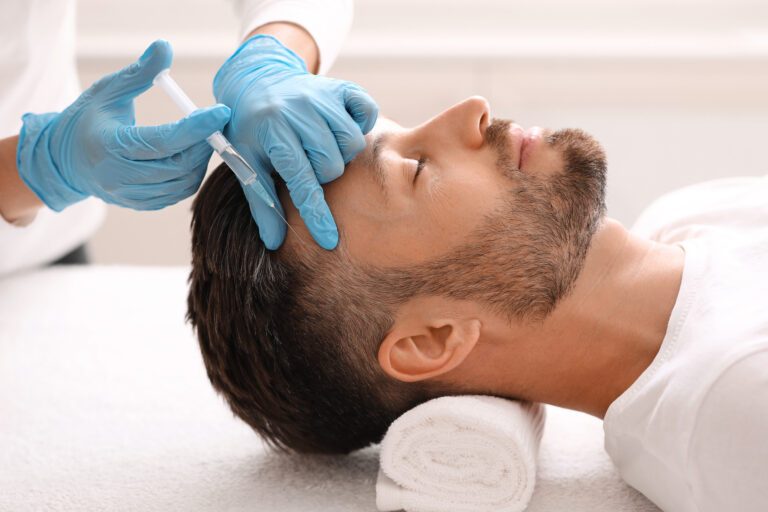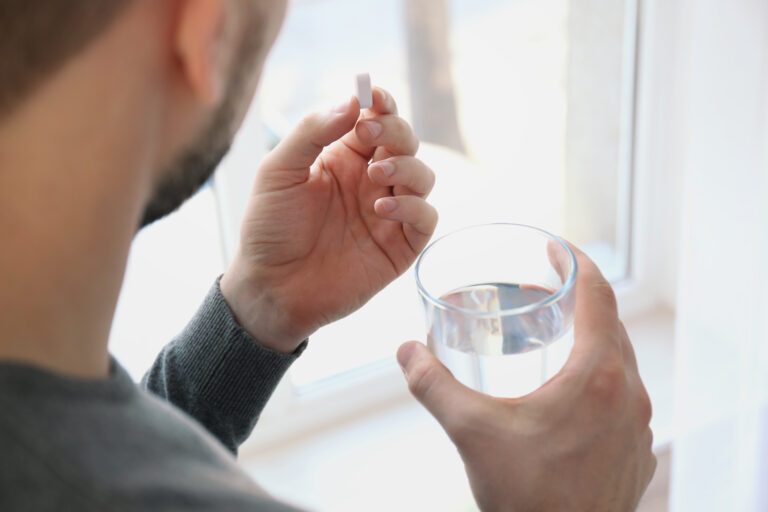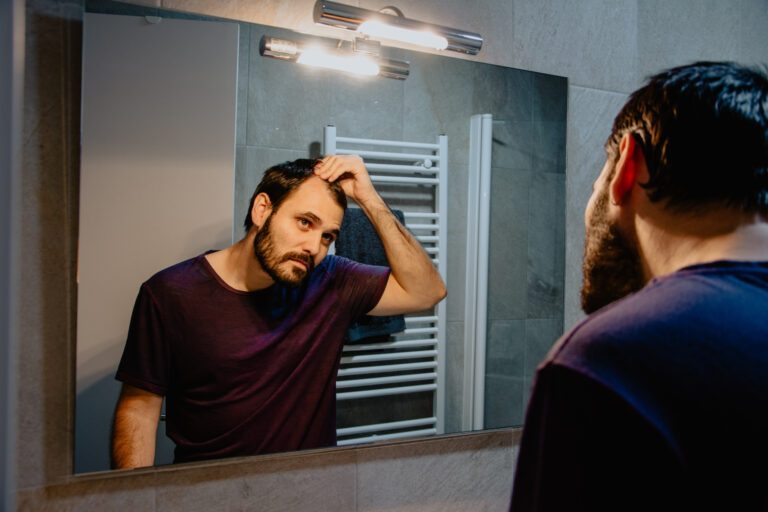Hair Transplant Infections: Causes & How to Prevent Them
Millions of people suffer from degenerative hair diseases like alopecia. According to MedlinePlus, this issue affects 50 million men and 30 million women in the United States alone.
For this reason, many people choose to get a hair transplant to combat this problem. Authorities estimate that over 650,000 individuals go under the knife each year to repair their crowning glory.
However, every hair transplant operation comes with risks. Several side effects, as well as scalp and follicle infections, can develop—especially in a botched surgical operation.
In this post, we’ll explore the causes and symptoms of hair transplant infections. We’ll also walk you through the preventive measures to avoid complications after a hair restoration procedure.
How a Hair Transplant Is Done
A hair transplant is the surgical method of restoring your scalp’s health. It involves taking healthy hair follicles and replanting them on the balding area.
There are two types of hair transplant methods: follicular unit extraction and follicular unit transplantation. These two methods differ in their extraction and transplantation techniques.
Follicular unit extraction is a suture-less, non-invasive surgical procedure. The doctor extracts healthy hair (one by one) and plants them on the bald spots.
Follicular unit transplantation, on the other hand, is a much more complex operation. In this method, the doctor cuts a strip off your scalp, removes the healthy follicles, and replants them.
Hair Transplant Infection: Causes
Infection occurs when pathogens and microbes enter your body through wounds. In a hair transplant surgery, they can enter the scalp in two ways: the donor or the recipient sites.
Scalps typically have a high rate of blood flow. This characteristic helps combat infections that may arise from wounds and cuts.
However, hair restoration surgeries require a number of cuts to the scalp. It makes the skin on your scalp more vulnerable to complications caused by the following:
1. Bacterial Infestation
Bacterial infestation is the primary culprit for developing an infection after a hair transplant surgery. When this happens, your incision and cuts can swole and cause tissue damage.
An unsanitary surgical environment and poor hygiene can significantly increase the chances of infection. So, be sure to go to trusted, professional clinics specializing in hair transplants.
2. Medical Conditions
In addition, some underlying medical conditions can also hinder your body’s immune response and slow the healing process. These cases can easily trigger an infection in wounded follicles.
Some examples of these disorders are diabetes, severe obesity, malnutrition, and low body temperature. It includes illnesses that weaken the immune system, such as cancer and HIV.
3. Excessive Scabbing
Finally, some patients experience severe scabbing on their scalps after the procedure. Although not an issue in itself, some people may feel the urge to scratch and transfer bacteria in the process.
After the procedure, doctors usually walk their patients through all the steps to care for the newly operated scalp. So, make sure to follow their after-care advice as faithfully as you can.
Symptoms of Hair Transplant Infection
Now that you know the causes, how do you know that you have a scalp infection? Are there visible signs to watch out for?
Here are the symptoms of an infected hair transplant follicle and scalp:
1. Swelling and Pain
Swelling and pain in the surgical area after your hair transplant are normal. You may also feel slight discomfort, itchiness, and discoloration at the recipient or donor site.
That said, this case should heal after five to ten days. If the swelling and discoloration continue for longer than a week, this could be a sign of infection.
2. Bleeding and Pus
Minor cuts, especially on the scalp’s surface, should heal on their own without treatment. However, if there’s severe bleeding and pus involved, you should immediately see your doctor.
Pus is the result of your body fighting an infection. Thus, if there’s smelly, yellowish discharge on the surgery site, it’s a surefire symptom of a bacterial infection.
3. Slow Healing and Fever
Another way to detect infection is the healing rate. As we said earlier, hair transplant cuts should heal within a week—any more than that could be a sign of a contaminated wound.
If you’re experiencing fever or headaches, you should seek immediate medical attention. Always remember that an infection is serious business, so never try to deal with it yourself.
How to Prevent Hair Transplant Infection
Scalp infection can be painful and discomforting. Fortunately, you can avoid the snag of dealing with it by following these tips:
1. Pick The Right Clinic
You can trace most issues and complications from a botched hair transplant infection. That’s why it’s crucial to choose legitimate clinics that follow proper hygiene protocols.
Professionals maintain health precautions while doing the surgery. This includes using sterile and clean instruments that significantly reduce the chance of infection.
2. Keep Your Hands Away
As much as possible, keep your hands away from the wound and the graft site. Our hands carry thousands of germs and bacteria, so touching them is a bad idea.
Never try to pick or remove scabs and crust prematurely. Although they can look unsightly, they help with the healing process of your scalp.
3. Maintain Proper After-care
Maintaining high-quality after-care is one of the keys to successful hair restoration. It’s especially vital within the first weeks after the transplant.
Follow your doctor’s instructions about proper washing and hygiene. Make sure to take your prescribed medicines and vitamins as well.
4. Attend Follow-up Check-Ups
Your trichologist will schedule follow-up appointments to monitor your progress. This way, they can address issues that may arise while your scalp is healing.
Attending these meetings can help answer any questions you may have. Most importantly, it aids your doctor in assessing and adjusting your treatments accordingly.
5. Other Things to Remember
Avoid demanding and sweaty activities for a few days after your operation. Doctors discourage smoking, tobacco products, and alcoholic drinks as well.
Wearing headgear will help protect your scalp from outside elements, like the sun and specks of dust. Do this for a few weeks to avoid infections and boost your follicles’ healing process.
Are There Long-Term Effects of Scalp Infection?
Unfortunately, post-treatment infection can affect your well-being and ruin the overall result of the operation. That’s why it’s imperative to deal with the problem as quickly as possible.
The scars from swelling and lesions can also cause inconsistency in hair growth. The grafts from the scalp areas with severe tissue damage from infection may refuse to grow.
Finally, the NCBI even reported septicemia in some rare cases. It’s an illness characterized by blood poisoning from severe bacterial infections that can easily prove deadly.
How Likely Are Hair Infections To Occur?
Modern medical technologies are ever-advancing. Thanks to that, the likelihood of developing an infection from hair restorative procedures is minimal.
That said, the risk doesn’t only come from the surgery. Ultimately, it all comes down to your ability to care for your scalp and hair follicles.
Your sanitary practices are the key to avoiding this problem once and for all. Practical preparation and planning before your surgery are crucial as well.
Complications After A Hair Transplant Infection
Infection isn’t the only thing to be wary of in a hair transplant operation. To give you an idea, here are some potential complications as reported by the NCBI.
1. Folliculitis
Folliculitis are small, pimple-like bumps on your scalp’s follicles that were damaged by the grafting and implantation of hairs. This condition can occur a few days or months after the procedure.
The inflammation typically means that bacteria have invaded the cuts. However, it can also appear even though the wounds are clean—they call this case sterile folliculitis.
Mild cases of folliculitis should heal without scarring in a few days. If it persists, your best course of action is to speak to your doctor.
2. Cysts
Like folliculitis, cysts are sac-like structures around the implanted follicles. These lumps usually contain liquid or semisolid materials similar to blisters.
Cysts grow when hair grafts stack on top of each other. When this happens, the graft on top blocks the sebaceous duct that secretes sebum from the skin.
Without treatment, a sebaceous cyst will disappear on its own. It may, however, swell and rupture, which poses bacterial contamination.
3. Necrosis
When microbes and pathogens invade the skin on your scalp, you’re at risk of contracting necrosis. It’s a grave type of infection that causes patches of tissues to die.
Necrosis usually happens after massive transplant sessions in people of old age. It can occur at the spots where the surgeon removes or plants the hair grafts.
Unfortunately, there are no known treatments for this scalp problem. Saving the infected tissue isn’t possible, so doctors suggest cutting it out to encourage wound healing.
Final Thoughts
Hair loss is an issue plaguing millions of people all over the world. Because of this, hundreds of thousands of individuals opt for hair transplant procedures.
That said, infection from surgeries involving hair restoration is minimal. Even so, if you don’t properly care for your scalp, you may encounter several complications.
Finally, follow your doctor’s instructions and after-care tips. With this, you’ll avoid dealing with troublesome hair transplant infections altogether.







